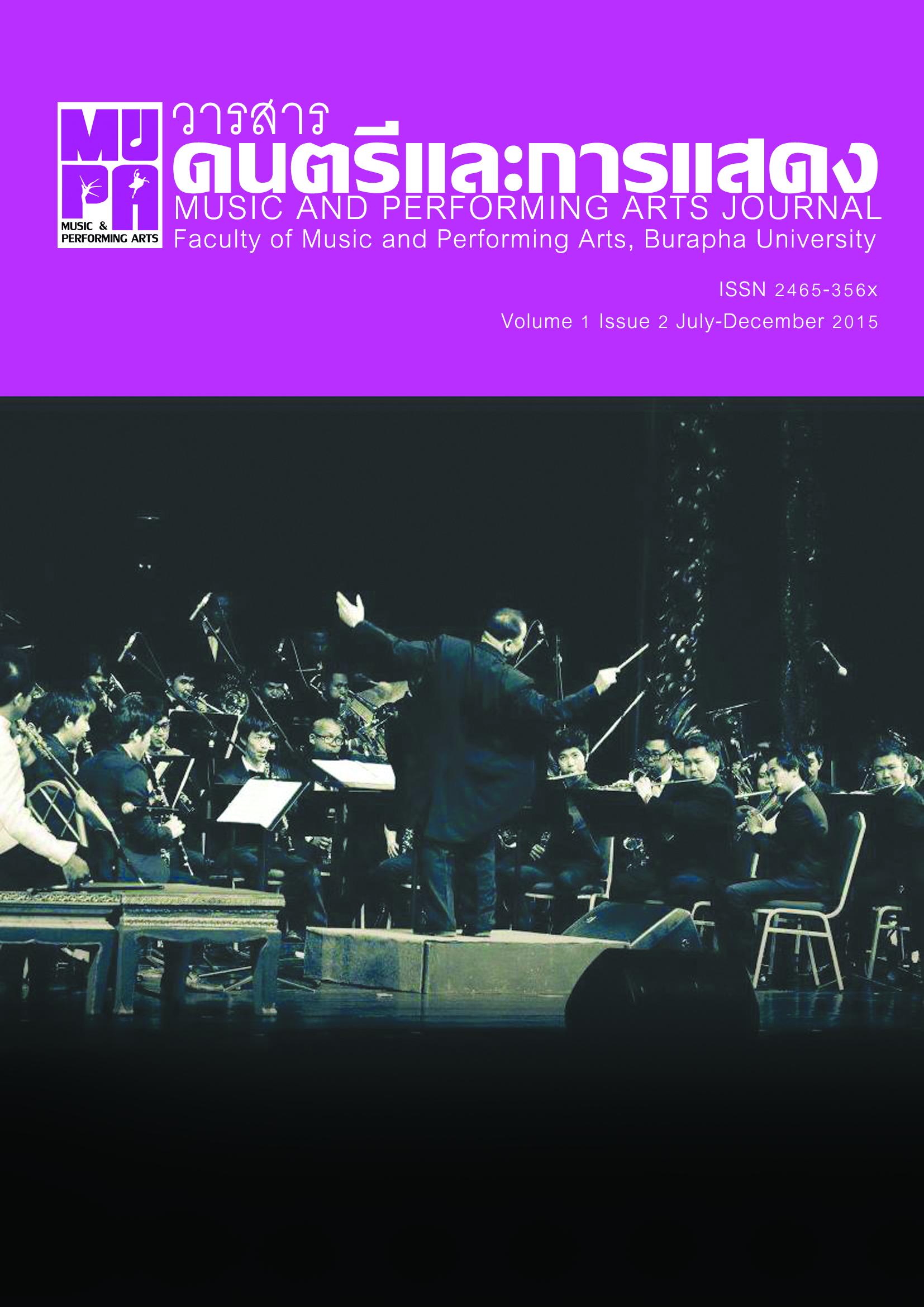Evoking Common Emotions through Scale Degrees and Intervals: A Comparative Example of Western and Asian Compositional Patterns
คำสำคัญ:
Asian music composition, music and sentiment, cross-cultural music composition, scale/modal degree, stable and unstable tones, key-defining progression, tension, and resolution, musical intervals, homophonic and heterophonic textures, nanguan, Fengluowutong, Pyong-Sijo, pyong-jo, Sujecheon, Futaiken Reibo, changgo patterns, shakuhachiบทคัดย่อ
Taiwan is an island with a beautiful name, Formosa, and a culture that blends several cultures, ranging from Taiwanese, Chinese, and Japanese to western. The first wave of new music occurred in 1959 when the late Professor Hsu Tsang-Houei returned from Paris. In 1981, Professor Ma Shui‑long, a composer with a longtime passion for merging eastern and western music traditions, founded the Music Department at Taipei National University of the Arts (TNUA), after which a diversity of approaches to composition teaching started to find a place at our university. This paper explores some of the approaches I have taken to teaching composition at TNUA over the past 25 years.



